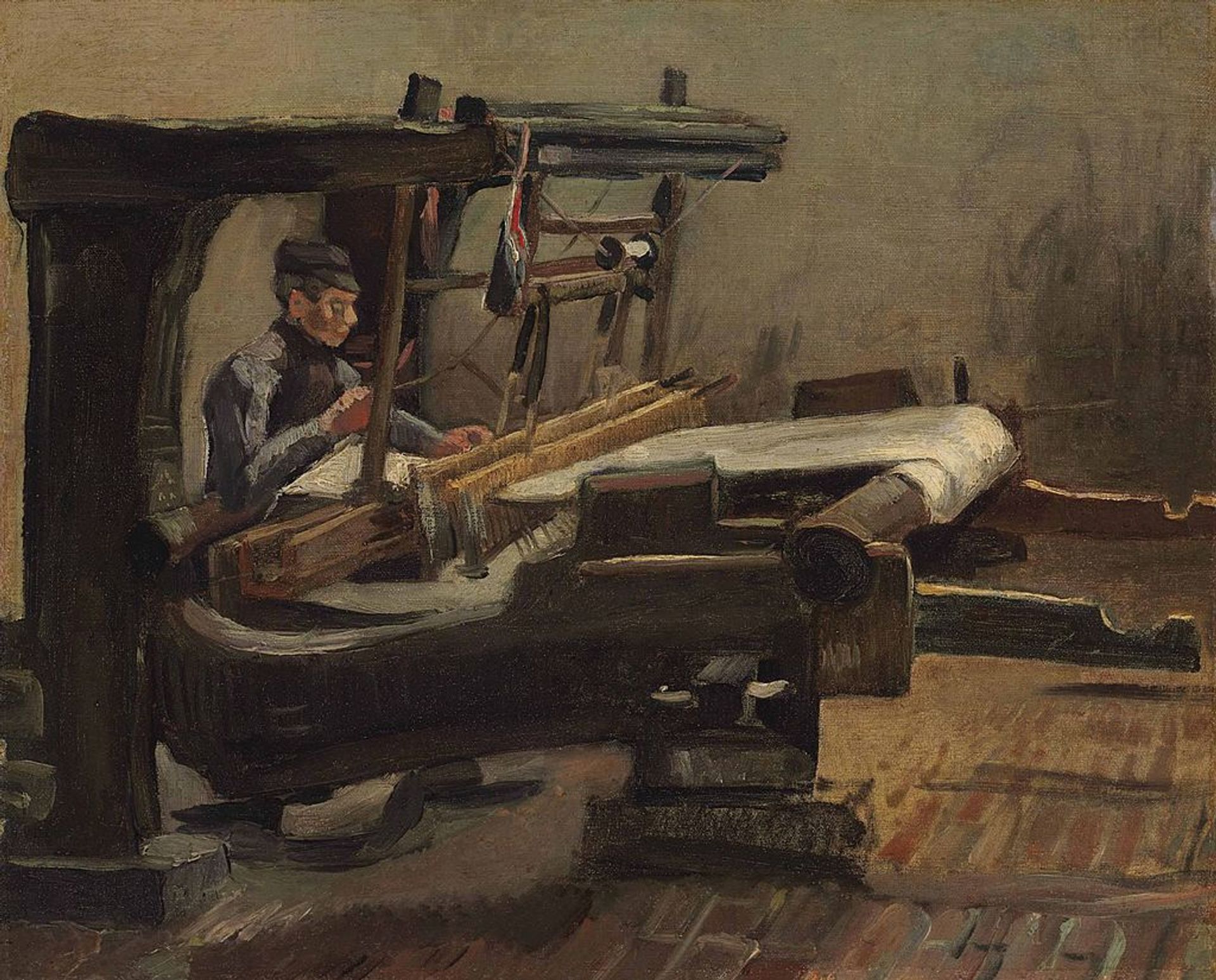The National Gallery’s show Van Gogh: Poets and Lovers (14 September 2024-19 January 2025) will be the highlight of its 200th birthday celebrations. We can disclose there will be around 50 paintings and drawings from the artist’s two years in Provence, when he was at the height of his powers.

Van Gogh’s Portrait of Eugène Boch (The Poet) (September 1888)
Credit: Musée d’Orsay, Paris
Why “poets” and “lovers”? One of Van Gogh’s friends in Arles, in the south of France, was the Belgian artist Eugène Boch. Although Boch does not seem to have actually written poetry, Van Gogh set out to portray him as an archetypal poet, sensitive and deep in thought. Van Gogh regarded Provence as the land of poetry.
Vincent wrote to his brother Theo about the Boch painting which he had been “dreaming about for a long time—the poet”. He described the picture: “His fine head, with its green gaze, stands out in my portrait against a starry, deep ultramarine sky.” Van Gogh was pleased with the result, hanging it above his bed in the Yellow House.

Van Gogh’s Public Garden with a Couple strolling (The Poet’s Garden) (October 1888)
Credit: private collection/Alamy Stock Photo
Lovers are much more prevalent than poets in Van Gogh’s Arles paintings. Pairs of strolling lovers frequently occur in his landscapes, enlivening urban public garden scenes.
There must have been an element of wishful thinking in introducing lovers into his paintings, since by this time Vincent had realised that it was unlikely he himself would ever establish a long-term relationship with a woman. As he later wrote to his mother, “for me life might well remain solitary”.
The National Gallery show, focussed loosely around poets, lovers and gardens, will include exceptional loans, such as the Rhône riverscape Starry Night (October 1888, Musée d’Orsay, Paris) and a version of The Bedroom (September 1889, Art Institute of Chicago).

Van Gogh’s Self-portrait (spring 1887)
Credit: Rijksmuseum, Amsterdam
Next year’s other important Van Gogh exhibition will be in what may seem an unexpected venue—the Groninger Museum in the northern Dutch city of Groningen. The impetus for this is that one of the earliest shows of the artist’s work was held there in 1896. At that time it was the largest exhibition ever held on Van Gogh, with 128 works.
It is now very difficult to borrow Van Goghs, particularly for regional museums, but the Groninger is expecting around 10 paintings and 25 drawings. That represents a considerable achievement.
Nearly all the loans in How Van Gogh Came to Groningen (30 November 2024-5 May 2025) will be works that were in the 1896 show. The earlier exhibition included a self-portrait, and although the precise work has not been identified. For next year’s show the Rijksmuseum in Amsterdam is lending one of the artist’s finest self-portraits, dating from spring 1887.
In the 1896 exhibition a bizarre juxtaposition was introduced: a portrait of Van Gogh by his friend Henri de Toulouse-Lautrec was displayed below a real crown of thorns.
In 1896 the Groningen organisers had asked Jo Bonger, Vincent’s sister-in-law, if they could borrow the Toulouse-Lautrec portrait and “hang a wreath around it, consisting chiefly of thorns, with a few laurel leaves”. This would associate Van Gogh, who had taken his own life six years earlier, with the suffering Christ. Vincent had died for his art, which had been ignored and failed to sell. The avant-garde regarded him as a martyr.
What makes this unusual arrangement of the portrait and crown of thorns particularly bizarre is that Toulouse-Lautrec had portrayed his friend in a Montmartre bar—a glass of absinthe close at hand. We are here reconstructing what it might have looked like in the 1896 exhibition.

The Art Newspaper’s reconstruction: Henri de Toulouse-Lautrec’s Portrait of Van Gogh (1887) beneath a generic image of a crown of thorns
Credits: Van Gogh Museum, Amsterdam / Creative Commons
Unfortunately the Toulouse-Lautrec portrait is a fragile pastel work, now at Amsterdam’s Van Gogh Museum, and cannot be lent for conservation reasons—so it won’t be appearing in next year’s show.
The Groninger Museum also has another reason to celebrate Van Gogh next year. Last September it successfully recovered a painting stolen from its collection. In 2020, The Parsonage Garden at Nuenen in Spring (March 1884) had been seized in a violent raid while on loan to the Singer Laren museum. The recovered painting is now being conserved at Amsterdam’s Van Gogh Museum and is expected to be reintegrated into the Groninger’s permanent display, possibly next spring.
Along with the London and Groningen 2024 exhibitions, there are four current Van Gogh shows which will extend into the first few weeks of the new year. Travelling with Vincent: Van Gogh in Drenthe, on the artist’s autumn 1883 visit to the northern peatlands of the Netherlands, is due to close at the Drents Museum in Assen on 7 January 2024.
Van Gogh along the Seine, featuring the work of Vincent and his avant-garde colleagues in the suburbs of Paris, ends at the Van Gogh Museum on 14 January 2024.
At Tokyo’s Sompo Museum of Art, Van Gogh and Still Life: From Tradition to Innovation closes on 21 January 2024. It is centred around the museum’s Sunflowers (November-December 1888).
And lastly, Van Gogh in Auvers-sur-Oise: The Final Months finishes at the Musée d’Orsay in Paris on 4 February 2024.
Other Van Gogh news:

Van Gogh’s Weaver facing Right (February 1884)
Credit: Christie’s
Three Van Gogh works are coming up for sale in New York this month. Christie’s has the Nuenen painting Weaver facing Right (February 1884) to be auctioned on 9 November and estimated at $2m-$3m. Two days later it is selling a drawing, Young Girl with a Loaf of Bread (September-November 1882), with an estimate of $400,000-$600,000. And on 14 November Sotheby’s has another drawing, Head of a Fisherman, turned Three-Quarters to the Right (January-February 1883), estimated at $500,000-$700,000.










